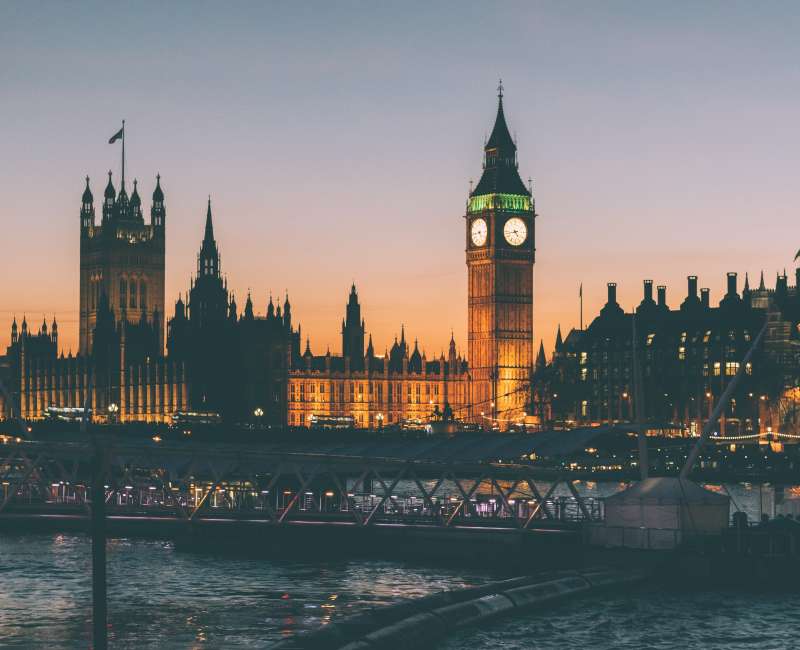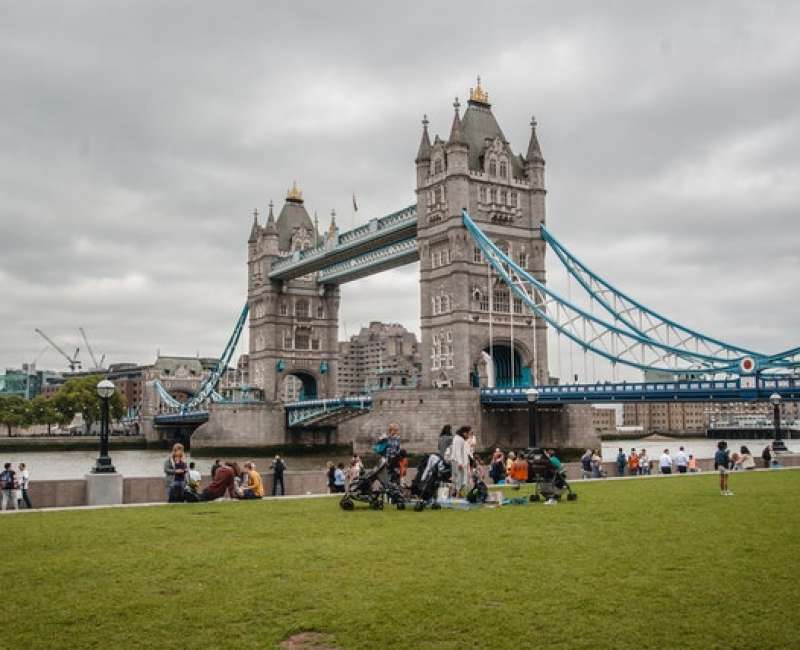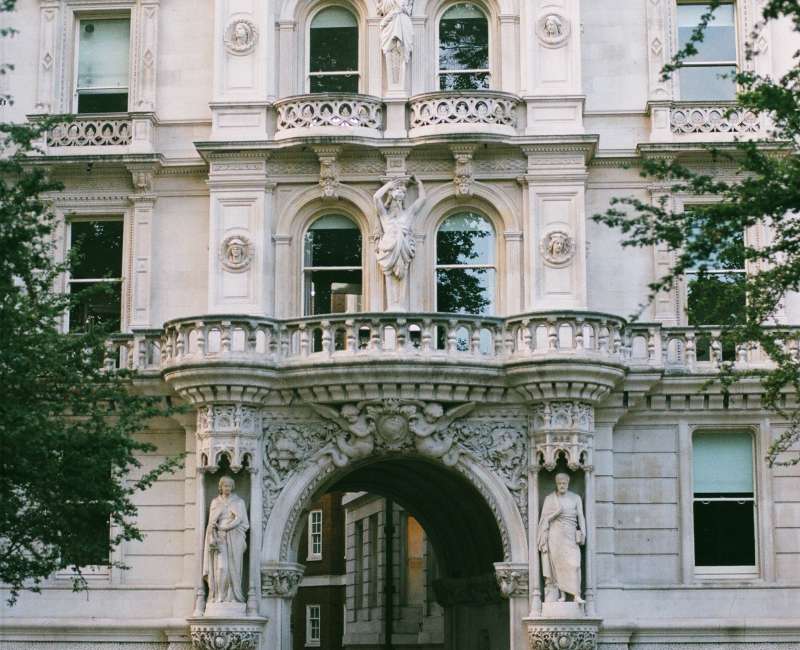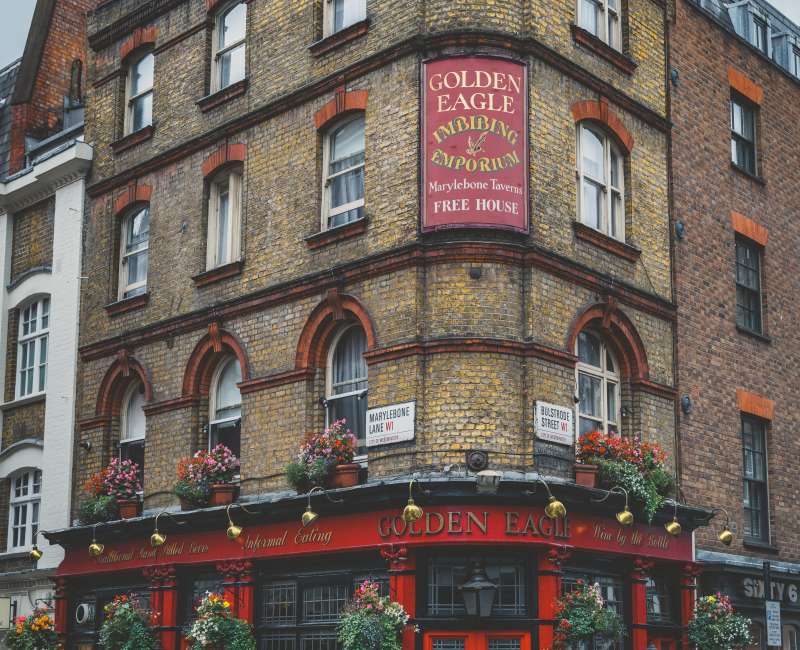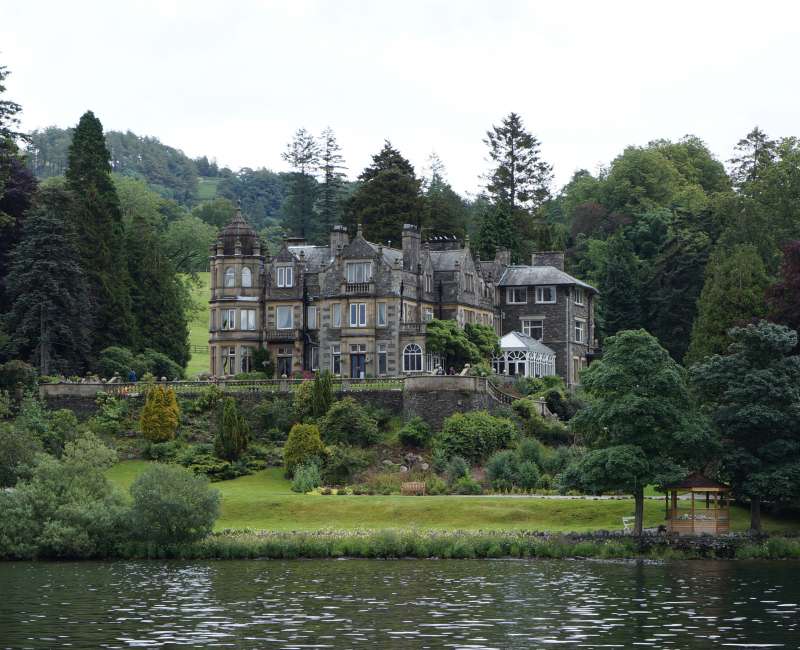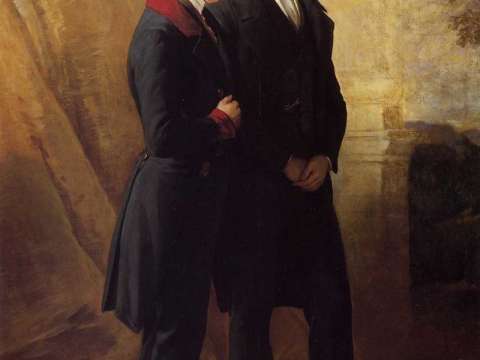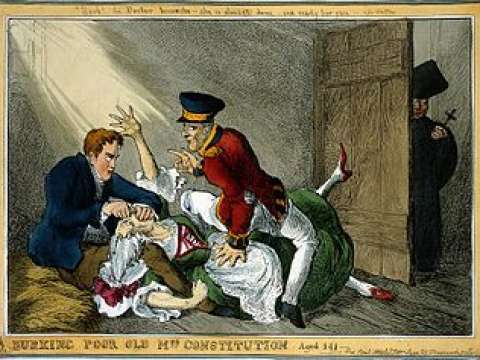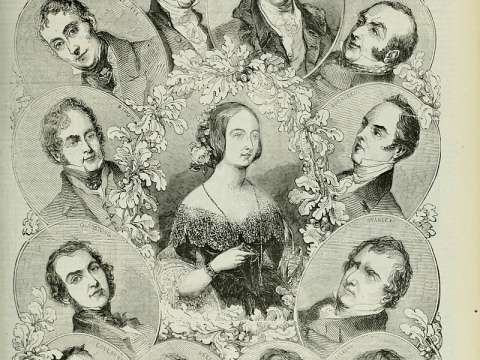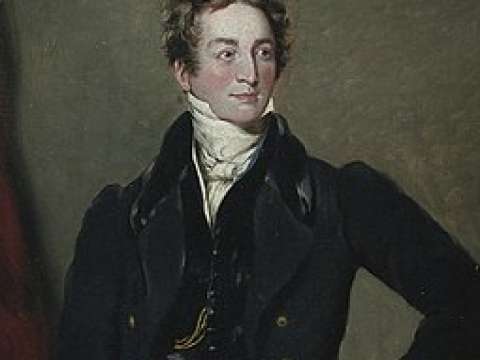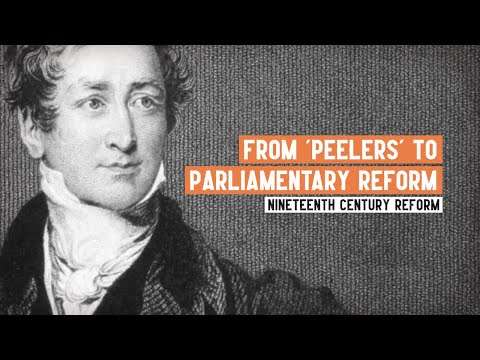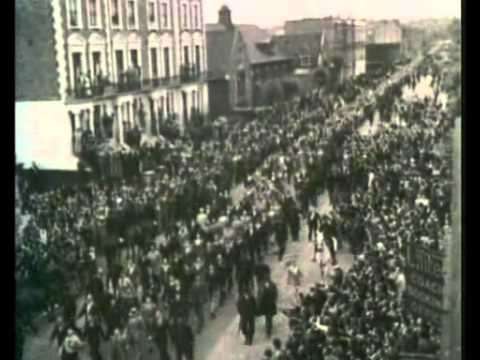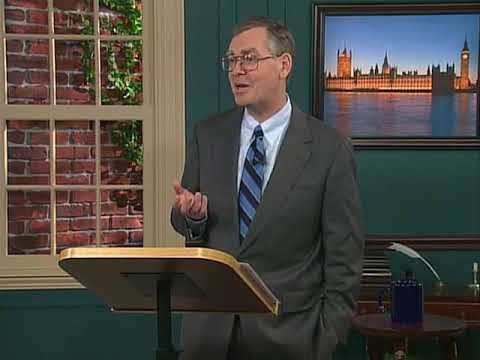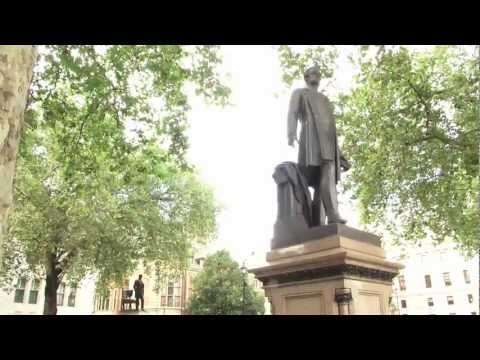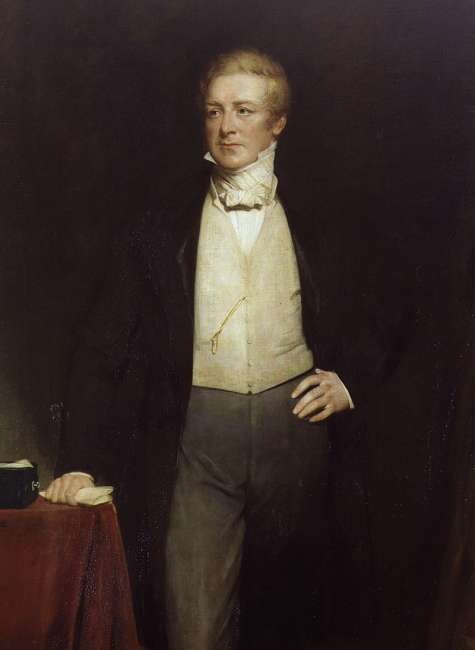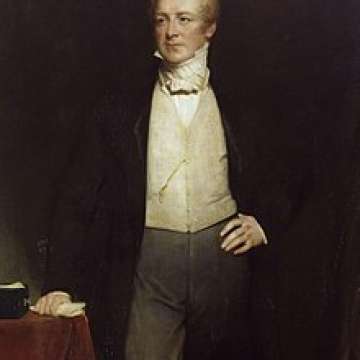

Robert Peel (1788-1850)

The police are the public and the public are the police; the police being only members of the public who are paid to give full time attention to duties which are incumbent on every citizen in the interests of community welfare and existence.
Sir Robert Peel, 2nd Baronet, was a British Conservative statesman who served twice as Prime Minister of the United Kingdom 1834–35 and 1841–46 and twice as Home Secretary 1822–27 and 1828–30. He is regarded as the father of modern British policing, owing to his founding of the Metropolitan Police Service. Peel was one of the founders of the modern Conservative Party.
The son of a wealthy textile-manufacturer and politician, Peel was the first prime minister from an industrial business background. He earned a double first in classics and mathematics from Christ Church, Oxford. He entered the House of Commons in 1809, and became a rising star in the Tory Party. Peel entered the Cabinet as Home Secretary 1822–1827, where he reformed and liberalised the criminal law and created the modern police force, leading to a new type of officer known in tribute to him as "bobbies" and "peelers". After a brief period out of office he returned as Home Secretary under his political mentor the Duke of Wellington 1828–1830, also serving as Leader of the House of Commons. Initially a supporter of continued legal discrimination against Catholics, Peel reversed himself and supported the repeal of the Test Act 1828 and the Roman Catholic Relief Act 1829, claiming that "though emancipation was a great danger, civil strife was a greater danger".
After being in the Opposition 1830–34, he became Prime Minister in November 1834. Peel issued the Tamworth Manifesto December 1834, laying down the principles upon which the modern British Conservative Party is based. His first ministry was a minority government, dependent on Whig support and with Peel serving as his own Chancellor of the Exchequer. After only four months, his government collapsed and he served as Leader of the Opposition during Melbourne's second government 1835–1841. Peel became Prime Minister again after the 1841 general election. His second government ruled for five years. He cut tariffs to stimulate trade, replacing the lost revenue with a 3% income tax. He played a central role in making free trade a reality and set up a modern banking system. His government's major legislation included the Mines and Collieries Act 1842, the Income Tax Act 1842, the Factories Act 1844 and the Railway Regulation Act 1844. Peel's government was weakened by anti-Catholic sentiment following the controversial increase in the Maynooth Grant of 1845. After the outbreak of the Great Irish Famine, his decision to join with Whigs and Radicals to repeal the Corn Laws led to his resignation as Prime Minister in 1846. Peel remained an influential MP and leader of the Peelite faction until his death in 1850.
Peel often started from a traditional Tory position in opposition to a measure, then reversed his stance and became the leader in supporting liberal legislation. This happened with the Test Act, Catholic Emancipation, the Reform Act, income tax and, most notably, the repeal of the Corn Laws. Historian A. J. P. Taylor wrote: "Peel was in the first rank of 19th century statesmen. He carried Catholic Emancipation; he repealed the Corn Laws; he created the modern Conservative Party on the ruins of the old Toryism."
Early life
Peel was born at Chamber Hall, Bury, Lancashire, to the industrialist and parliamentarian Sir Robert Peel, 1st Baronet, and his wife Ellen Yates. His father was one of the richest textile manufacturers of the early Industrial Revolution. The family moved from Lancashire to Drayton Manor near Tamworth, Staffordshire; the manor house has since been demolished, the site occupied by Drayton Manor Theme Park.
Peel received his early education from a clergyman tutor in Bury and at a clergyman's local school in Tamworth. He may also have attended Bury Grammar School or Hipperholme Grammar School, though evidence for either is anecdotal rather than textual. He started at Harrow School in February 1800. At Harrow he was a contemporary of Lord Byron, who recalled of Peel that "we were on good terms" and that "I was always in scrapes, and he never". On Harrow's Speech Day in 1804, Peel and Byron acted part of Virgil's Aeneid, Peel playing Turnus and Byron playing Latinus.

In 1805 Peel matriculated at Christ Church, Oxford. His tutor was Charles Lloyd, later Regius Professor of Divinity, on Peel's recommendation appointed Bishop of Oxford. In 1808 Peel became the first Oxford student to take a double first in Classics and Mathematics.
Peel was a law student at Lincoln's Inn in 1809. He also held military commissions as a captain in the Manchester Regiment of Militia in 1808, and later as lieutenant in the Staffordshire Yeomanry Cavalry in 1820.
Early political career
Peel entered politics in 1809 at the age of 21, as MP for the Irish rotten borough of Cashel, Tipperary. With a scant 24 electors on the rolls, he was elected unopposed. His sponsor for the election besides his father was the Chief Secretary for Ireland, Sir Arthur Wellesley, the future Duke of Wellington, with whom Peel's political career would be entwined for the next 25 years. Peel made his maiden speech at the start of the 1810 session, when he was chosen by Prime Minister Spencer Perceval to second the reply to the king's speech. His speech was a sensation, famously described by the Speaker, Charles Abbot, as "the best first speech since that of William Pitt."
Peel changed constituency twice, becoming MP for Chippenham in 1812, and then MP for Oxford University in 1817.
In 1810, Peel was appointed an Under-Secretary of State for War and the Colonies; his Secretary of State was Lord Liverpool. When Lord Liverpool formed a government in 1812, Peel was appointed Chief Secretary for Ireland. The Peace Preservation Act of 1814 authorised the Lord Lieutenant of Ireland to appoint additional magistrates in a county in a state of disturbance, who were authorised to appoint paid special constables later called "peelers". Peel thus laid the basis for the Royal Irish Constabulary.

Peel was firmly opposed to Catholic emancipation, believing that Catholics could not be admitted to Parliament as they refused to swear the Oath of Allegiance to the Crown. In May 1817, Peel delivered the closing speech in opposition to Henry Grattan's Catholic emancipation bill; the bill was defeated by 245 votes to 221.
Peel resigned as Chief Secretary and left Ireland in August 1818.
In 1819 the House of Commons appointed a Select Committee, the Bullion Committee, charged with stabilising British finances after the end of the Napoleonic Wars, and Peel was chosen as its chairman. Peel's Bill planned to return British currency to the gold standard, reversing the Bank Restriction Act 1797, within four years it was actually accomplished by 1821.
Home Secretary
Peel was considered one of the rising stars of the Tory party, first entering the cabinet in 1822 as Home Secretary. As Home Secretary, he introduced a number of important reforms of British criminal law. He reduced the number of crimes punishable by death, and simplified the law by repealing a large number of criminal statutes and consolidating their provisions into what are known as Peel's Acts. He reformed the gaol system, introducing payment for gaolers and education for the inmates in the Gaols Act 1823.
In 1827 the Prime Minister Lord Liverpool became incapacitated and was replaced by George Canning. Peel resigned as home secretary. Canning favoured Catholic emancipation, while Peel had been one of its most outspoken opponents earning the nickname "Orange Peel", with Orange the colour of the anti-Catholic Orange Order. George Canning himself died less than four months later and, after the brief premiership of Lord Goderich, Peel returned to the post of Home Secretary under the premiership of his long-time ally the Duke of Wellington. During this time he was widely perceived as the number-two in the Tory Party, after Wellington himself.
The Test and Corporation Acts required many officials to be communicants in the Anglican Church and penalised both nonconformists and Catholics. They were no longer enforced but were a matter of humiliation. Peel at first opposed the repeal, but reversed himself and led the repeal on behalf of the government, after consultation with Anglican Church leaders. The Sacramental Test Act 1828 passed into law in May 1828. In future religious issues he made it a point to consult with church leaders from the major denominations.

The 1828 Clare by-election returned the Catholic Irish nationalist leader Daniel O'Connell. By autumn 1828, the Chief Secretary for Ireland was alarmed by the extent of civil disorder and the prospect of a rebellion if O'Connell were barred from Parliament. Wellington and Peel now conceded the necessity of Catholic emancipation, Peel writing to Wellington that "though emancipation was a great danger, civil strife was a greater danger". Peel drew up the Catholic Relief bill.
Peel felt compelled to stand for re-election to his seat in Oxford, as he was representing the graduates of Oxford University many of whom were Anglican clergymen, and had previously stood on a platform of opposition to Catholic Emancipation. Peel lost his seat in a by-election in February 1829, but soon found another, moving to a rotten borough, Westbury, retaining his Cabinet position. He stood for Tamworth in the general election of 1830, representing Tamworth until his death.
Peel guided the Catholic relief bill through the House of Commons, Wellington through the House of Lords. With many Ultra-Tories vehemently opposed to emancipation, the bill could pass only with Whig support. Wellington threatened to resign if King George IV did not give Royal assent; the King finally relented, the Roman Catholic Relief Act 1829 passing into law in April 1829. Peel's U-turn cost him the trust of many Tories: according to Norman Gash, Peel had been "the idolized champion of the Protestant party; that party now regarded him as an outcast".
Police reform
It was in 1829 that Peel established the Metropolitan Police Force for London based at Scotland Yard. The 1,000 constables employed were affectionately nicknamed 'bobbies' or, somewhat less affectionately, 'peelers'. Although unpopular at first, they proved very successful in cutting crime in London, and by 1857 all cities in Britain were obliged to form their own police forces. Known as the father of modern policing, Peel is thought to have contributed to the Metropolitan Police's first set of "Instructions to Police Officers", emphasising the importance of its civilian nature and policing by consent. However, what are now commonly known as the Peelian Principles were not written by him but were instead produced by Charles Reith in his 1948 book A Short History of the British Police as a nine-point summary of the 1829 "Instructions".
Whigs in power 1830–1834
The middle and working classes in England at that time, however, were clamouring for reform, and Catholic Emancipation was only one of the ideas in the air. The Tory ministry refused to bend on other issues and were swept out of office in 1830 in favour of the Whigs. The following few years were extremely turbulent, but eventually enough reforms were passed that King William IV felt confident enough to invite the Tories to form a ministry again in succession to those of Lord Grey and Lord Melbourne in 1834. Peel was selected as prime minister but was in Italy at the time, so Wellington acted as a caretaker for three weeks until Peel's return.
First term as prime minister 1834–1835
The Tory Ministry was a minority government and depended on Whig goodwill for its continued existence. Parliament was dissolved in December 1834 and a general election called. Voting took place in January and February 1835, and Peel's supporters gained around 100 seats, but this was not enough to give them a majority.
As his statement of policy at the general election of January 1835, Peel issued the Tamworth Manifesto. This document was the basis on which the modern Conservative Party was founded. In it Peel pledged that the Conservatives would endorse modest reform.

The Whigs formed a compact with Daniel O'Connell's Irish Radical members to repeatedly defeat the government on various bills. Eventually, after only about 100 days in government, Peel's ministry resigned out of frustration and the Whigs under Lord Melbourne returned to power. The only real achievement of Peel's first administration was a commission to review the governance of the Church of England. This ecclesiastical commission was the forerunner of the Church Commissioners.
Leader of the Opposition 1835–1841
In May 1839 he was offered another chance to form a government, this time by the new monarch, Queen Victoria. However, this too would have been a minority government, and Peel felt he needed a further sign of confidence from his Queen. Lord Melbourne had been Victoria's confidant since her accession in 1837, and many of the higher posts in Victoria's household were held by the wives and female relatives of Whigs; there was some feeling that Victoria had allowed herself to be too closely associated with the Whig party. Peel therefore asked that some of this entourage be dismissed and replaced with their Conservative counterparts, provoking the so-called Bedchamber Crisis. Victoria refused to change her household, and despite pleadings from the Duke of Wellington, relied on assurances of support from Whig leaders. Peel refused to form a government, and the Whigs returned to power.
Second term as prime minister 1841–1846
Economic and financial reforms
Peel finally had a chance to head a majority government following the election of July 1841. Peel came to office during an economic recession which had seen a slump in world trade and a budget deficit of £7.5 million run up by the Whigs. Confidence in banks and businesses was low, and a trade deficit existed.
To raise revenue Peel's 1842 budget saw the re-introduction of the income tax, removed previously at the end of the Napoleonic War. The rate was 7d in the pound, or just under 3 per cent. The money raised was more than expected and allowed for the removal and reduction of over 1,200 tariffs on imports including the controversial sugar duties. It was also in the 1842 budget that the repeal of the corn laws was first proposed. It was defeated in a Commons vote by a margin of 4:1.
Factory Act
Peel's promise of modest reform was held to, and the second most famous bill of this ministry, while "reforming" in 21st-century eyes, was in fact aimed at the reformers themselves, with their constituency among the new industrial rich. The Factory Act 1844 acted more against these industrialists than it did against the traditional stronghold of the Conservatives, the landed gentry, by restricting the number of hours that children and women could work in a factory and setting rudimentary safety standards for machinery. This was a continuation of his own father's work as an MP, as the elder Robert Peel was most noted for reform of working conditions during the first part of the 19th century. Helping him was Lord Shaftesbury, a British MP who also established the coal mines act.
Assassination attempt
In 1843 Peel was the target of a failed assassination attempt; a criminally insane Scottish wood turner named Daniel M'Naghten stalked him for several days before killing Peel's personal secretary Edward Drummond thinking he was Peel, which led to the formation of the criminal defense of insanity.
Corn Laws and after
The most notable act of Peel's second ministry, however, was the one that would bring it down. Peel moved against the landholders by repealing the Corn Laws, which supported agricultural revenues by restricting grain imports. This radical break with Conservative protectionism was triggered by the Great Irish Famine 1845–1849. Tory agriculturalists were sceptical of the extent of the problem, and Peel reacted slowly to the famine, famously stating in October 1846 already in opposition: "There is such a tendency to exaggeration and inaccuracy in Irish reports that delay in acting on them is always desirable".
His own party failed to support the bill, but it passed with Whig and Radical support. On the third reading of Peel's Bill of Repeal Importation Act 1846 on 15 May, MPs voted 327 votes to 229 a majority of 98 to repeal the Corn Laws. On 25 June the Duke of Wellington persuaded the House of Lords to pass it. On that same night Peel's Irish Coercion Bill was defeated in the Commons by 292 to 219 by "a combination of Whigs, Radicals, and Tory protectionists". Following this, on 29 June 1846, Peel resigned as prime minister.
Though he knew repealing the laws would mean the end of his ministry, Peel decided to do so. It is possible that Peel merely used the Irish Famine as an excuse to repeal the Corn Laws as he had been an intellectual convert to free trade since the 1820s. Blake points out that if Peel had been convinced that total repeal was necessary to stave off the famine, he would have enacted a bill that brought about immediate temporary repeal, not permanent repeal over a three-year period of gradual tapering-off of duties.

The historian Boyd Hilton argued that Peel knew from 1844 he was going to be deposed as the Conservative leader. Many of his MPs had taken to voting against him, and the rupture within the party between liberals and paternalists, which had been so damaging in the 1820s but masked by the issue of parliamentary reform in the 1830s, was brought to the surface over the Corn Laws. Hilton's hypothesis is that Peel wished to be deposed on a liberal issue so that he might later lead a Peelite/Whig/Liberal alliance.
As an aside in reference to the repeal of the Corn Laws, Peel did make some moves to subsidise the purchase of food for the Irish, but this attempt was small and had little tangible effect. In the age of laissez-faire, government taxes were small, and subsidies or direct economic interference was almost nonexistent. That subsidies were actually given was very much out of character for the political times; Peel's successor, Lord John Russell, received more criticism than Peel on Irish policy. The repeal of the Corn Laws was more political than humanitarian. Peel's support for free trade could already be seen in his 1842 and 1845 budgets; in late 1842 Graham wrote to Peel that "the next change in the Corn Laws must be to an open trade" while arguing that the government should not tackle the issue. Speaking to the cabinet in 1844, Peel argued that the choice was maintenance of the 1842 Corn Law or total repeal. Despite all of Peel's efforts, his reform programs had little effect on the situation in Ireland.
Later career and death
Peel did retain a hard core of supporters however, known as Peelites, and at one point in 1849 was actively courted by the Whig/Radical coalition. He continued to stand on his conservative principles, however, and refused. Nevertheless, he was influential on several important issues, including the furtherance of British free trade with the repeal of the Navigation Acts. Peel was a member of the committee which controlled the House of Commons Library, and on 16 April 1850 was responsible for passing the motion that controlled its scope and collection policy for the rest of the century.

Peel was thrown from his horse while riding on Constitution Hill in London on 29 June 1850. The horse stumbled on top of him, and he died three days later on 2 July at the age of 62 due to a clavicular fracture rupturing his subclavian vessels.
His Peelite followers, led by Lord Aberdeen and William Gladstone, went on to fuse with the Whigs as the Liberal Party.
Family
Peel married Julia Floyd 1795 - 1859 daughter of General Sir John Floyd, 1st Baronet and his first wife Rebecca Darke on 8 June 1820. They had seven children:
- Julia Peel 30 April 1821 – 14 August 1893. She married George Child Villiers, 6th Earl of Jersey, on 12 July 1841. They had five children. She married her second husband, Charles Brandling, on 12 September 1865.
- Sir Robert Peel, 3rd Baronet 4 May 1822 – 9 May 1895. He married Lady Emily Hay on 17 June 1856. They had five children.
- Sir Frederick Peel 26 October 1823 – 6 June 1906. He married Elizabeth Shelley died 30 July 1865, niece of the poet Percy Shelley through his brother John on 12 August 1857. He was remarried to Janet Pleydell-Bouverie on 3 September 1879.
- Sir William Peel 2 November 1824 – 27 April 1858.
- John Floyd Peel 24 May 1827 – 21 April 1910. He married Annie Jenny in 1851.
- Arthur Wellesley Peel 3 August 1829 – 24 October 1912. He married Adelaide Dugdale, daughter of William Stratford Dugdale and Harriet Ella Portman, on 14 August 1862. They had seven children.
- Eliza Peel c. 1832 – April 1883. She married Hon. Francis Stonor son of Thomas Stonor, 3rd Baron Camoys on 25 September 1855. They had four children.
Julia, Lady Peel, died in 1859. Some of her direct descendants now reside in South Africa, the Australian states of New South Wales, Queensland, Victoria and Tasmania, and in various parts of the United States and Canada.
Memory and legacy
In his lifetime many critics called him a traitor to the Tory cause, or as "a Liberal wolf in sheep's clothing", because his final position reflected liberal ideas.
The consensus view of scholars for much of the 20th century idealised Peel in heroic terms. Historian Boyd Hilton wrote that he was portrayed as:
The great Conservative patriot: a pragmatic gradualist, as superb in his grasp of fundamental issues as he was adroit in handling administrative detail, intelligent enough to see through abstract theories, a conciliator who put nation before party and established consensus politics.
Biographer Norman Gash wrote that Peel "looked first, not to party, but to the state; not to programmes, but to national expediency." Gash added that among his personal qualities were, "administrative skill, capacity for work, personal integrity, high standards, a sense of duty an outstanding intellect."
Gash emphasised the role of personality on Peel's political career:
Peel was endowed with great intelligence and integrity, and an immense capacity for hard work. A proud, stubborn, and quick-tempered man he had a passion for creative achievement; and the latter part of his life was dominated by his deep concern for the social condition of the country. Though his great debating and administrative talents secured him an outstanding position in Parliament, his abnormal sensitivity and coldness of manner debarred him from popularity among his political followers, except for the small circle of his intimate friends. As an administrator he was one of the greatest public servants in British history; in politics he was a principal architect of the modern conservative tradition. By insisting on changes unpalatable to many of his party, he helped to preserve the flexibility of the parliamentary system and the survival of aristocratic influence. The repeal of the Corn Laws in 1846 won him immense prestige in the country, and his death in 1850 caused a national demonstration of sorrow unprecedented since the death of William Pitt in 1806
Peel was the first serving British Prime Minister to have his photograph taken. Peel is also featured on the cover of The Beatles' Sgt. Pepper's Lonely Hearts Club Band album.
Memorials
Statues
Statues of Sir Robert Peel are found in the following British and Australian locations:
- Statue by Edward Hodges Baily in Bury
- Statue in Parliament Square, London
- Statue in Piccadilly Gardens, Manchester
- Statue in Woodhouse Moor, Leeds
- Statue in George Square, Glasgow
- Statue in Peel Park, Bradford
- Statue near Gawsworth Old Hall
- Statue in Edgbaston, Birmingham
Public houses and hotels
The following public houses, bars or hotels are named after Peel:
United Kingdom
- Robert Peel public house in Bury town centre, his birthplace.
- Sir Robert Peel public house, Tamworth.
- Peel Hotel, Tamworth.
- Sir Robert Peel public house, Edgeley, Stockport, Cheshire.
- Sir Robert Peel public house, Heckmondwike, West Yorkshire.
- Sir Robert Peel public house, Leicester.
- Sir Robert Peel public house, Malden Road, London NW5.
- Sir Robert Peel public house, Peel Precinct, Kilburn, London NW6.
- Sir Robert Peel public house, London SE17.
- Sir Robert Peel Hotel, Preston.
- Peel Park Hotel, Accrington, Lancashire.
- Sir Robert Peel public house Rowley Regis.
- Sir Robert Peel public house, Southsea.
- Sir Robert Peel public house, Stoke-on-Trent.
- Sir Robert Peel public house, Kingston upon Thames, Surrey.
- Sir Robert Peel public house, Bloxwich, Walsall.
Elsewhere
- Peel St and Peel Metro Station in Montreal. The street is the main north-south axis, downtown.
- The Sir Robert Peel Hotel colloquially known as "The Peel", a gay bar and nightclub located at the corner of Peel and Wellington Streets in the Melbourne suburb of Collingwood, in Australia.
- The Sir Robert Peel Hotel on the corner of Queensberry Street and Peel Street in the Melbourne suburb of North Melbourne, Victoria, in Australia.
- The Sir Robert Peel Motor Lodge Hotel, Alexandria Bay, New York.
- Peel Street, Hong Kong a small street in Hong Kong.
- Peel Street in Simcoe, Ontario, Canada is named in his honour.
- The Regional Municipality of Peel originally Peel County in Ontario, Canada. 10 Peel Centre Drive and Peel Centre. Peel Regional Police. Peel Regional Paramedic Services. Dufferin-Peel Catholic District School Board. Peel District School Board. former Peel Memorial Hospital closed 2007 in Brampton, Ontario.
- 10 Peel Centre Drive and Peel Centre.
- Peel Regional Police.
- Peel Regional Paramedic Services.
- Dufferin-Peel Catholic District School Board.
- Peel District School Board.
- former Peel Memorial Hospital closed 2007 in Brampton, Ontario.
- New Zealand pioneer Francis Jollie settled in Canterbury in 1853 and named Peel Forest after the former prime minister, as he had died in the year that Canterbury was founded. The adjacent mountain and the settlement that formed also took Peel's name.
Other memorials
- Peel Park, Bradford is named after Sir Robert Peel. It is one of the largest parks in the city, and indeed Yorkshire.
- Peel Tower Monument, built on top of Holcombe Hill in Ramsbottom, Bury.
- The Sir Robert Peel Hospital in Tamworth.
- A small monument in the centre of the town of Dronfield in Derbyshire. Nearby is the Peel Centre, a community centre in a former Methodist church.
- Peel Streets in the CBD, Melbourne and in Collingwood, Victoria Melbourne Australia.
- Peel Street in the CBD, Adelaide, South Australia.
- Peel Street, Montreal and its Peel Metro station. The street also features a high-rise residential building called Sir-Robert-Peel.
- The Peel River in Tamworth, New South Wales, Australia.
- Peel High School in Tamworth, New South Wales, Australia.
- Robert Peel Primary School in Sandy, Bedfordshire.
- A British steamer named SS Sir Robert Peel, based in Canada, was burned by American forces on 29 May 1838, at the height of American-Canadian tensions over the Caroline Affair.
- Tamworth-raised musician Julian Cope sings "the king and queen have offered me the estate of Robert Peel" on the song 'Laughing Boy', from his 1984 LP Fried.
- The right wing of the Trafford Centre is called Peel Avenue, named after Robert Peel.
- The official mascot of Bury Football Club is Robbie the Bobby, in honour of Sir Robert Peel.
- One of the buildings which make up the Home Office headquarters, 2 Marsham St, is named Peel.
- The Peel building, situated on Peel Campus of the University of Salford.
- The Sir Robert Peel monument, Cnr George & High Streets, Montrose, Scotland
- Peel Crescent in Mansfield, Nottinghamshire, UK.
In literature
Letitia Elizabeth Landon gave her tribute to Sir Robert in her poem Sir Robert Peel, published in Fisher's Drawing Room Scrap Book, 1837.
Robert Peel is a secondary character in the novel "Dodger" by Terry Pratchett.
More facts
Victoria (2016)
Victoria the Great (1937)
























